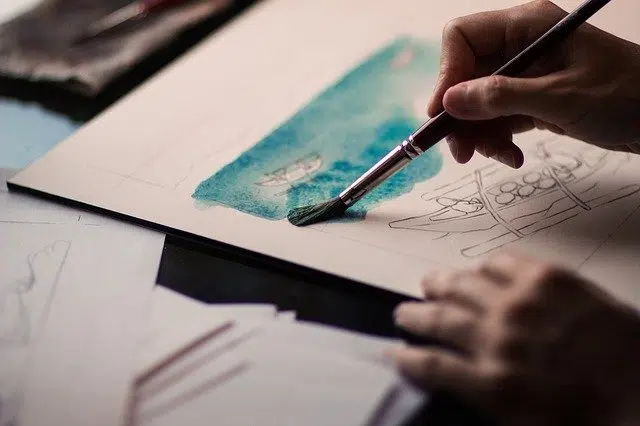
Watercolor is an artistic technique.
The etymology of watercolor leads us to acquarella , a word from the Italian language. A watercolor is a painting that is captured on cardboard or paper , whose colors are diluted in water . The concept also allows us to refer to the colors used in this type of paintings and this type of artistic technique in general.
Historians believe that watercolor emerged a century BC in China , when paper began to be developed. The Arabs, during the 12th century , brought the production of paper from Asia to Europe and thus, over time , watercolor was established in the Old Continent . In this way, among European artists, the watercolor technique succeeded fresco. The German Albrecht Dürer and the Italian Raffaello Santi were some of the pioneers of watercolor in that region.
Colors of a watercolor
Watercolor paintings are made with different pigments that are usually bound together with gum arabic . Water is a very important component in this technique since, depending on the amount used, more or less transparent colors are obtained. The type of paper also affects the result of the work. Artists usually choose paper according to texture and tension, taking into account their work plan.
For its part, gum arabic is a sticky and amorphous substance exuded by certain plants and that becomes hard when it comes into contact with air. Although it is not soluble in alcohol, it is soluble in water, and is used as a thickener in the pharmaceutical and gastronomic industries. In the case of cooking, it is ideal for providing elasticity to certain dishes and desserts, such as marzipan and jelly beans, although it also serves to give the appropriate texture to certain drinks.
Watercolor is based on the washes that the artist applies. With a cloth, sponge or brush, it is possible to add or remove water, achieving greater or lesser transparency. Sometimes, a great transparency of the paint is sought so that the paper provides luminosity.

The intensity of the color of a watercolor is linked to the washes applied by the artist.
Tips to get started in this technique
Watercolor is a particularly versatile material , and this can make the first experience very rewarding or very frustrating, since it all depends on the objectives we set for ourselves and the way we approach the technique.
One piece of advice that teachers often give to their students is not to think so much about the results they want to obtain, but to let themselves go and enjoy each step ; Furthermore, we should never expect to make a masterpiece right off the bat. That is why it is important to arm yourself with patience and approach learning with perseverance , knowing in advance that it will take many tests to achieve a satisfactory product.
Watercolor, pencil and paper
Regarding the medium, it is recommended to use a sheet of paper of considerable thickness. The first step is to make a sketch with a pencil, without pressing too much, so that it is possible to make as many corrections as we want. Just as mentioned in the previous paragraph, we should not seek perfection or aim for a high degree of complexity: few elements, simple and impressive , is a good starting point.
Once we have the pencil design ready, it is time to prepare and apply the watercolor. The ideal is to place a small amount on the palette, slightly moisten the brush and dilute the paint with a few drops of water, until reaching the appropriate thickness for handling. Throughout the process, we will have to let the sheet dry, to be able to work in several layers, among other things.
